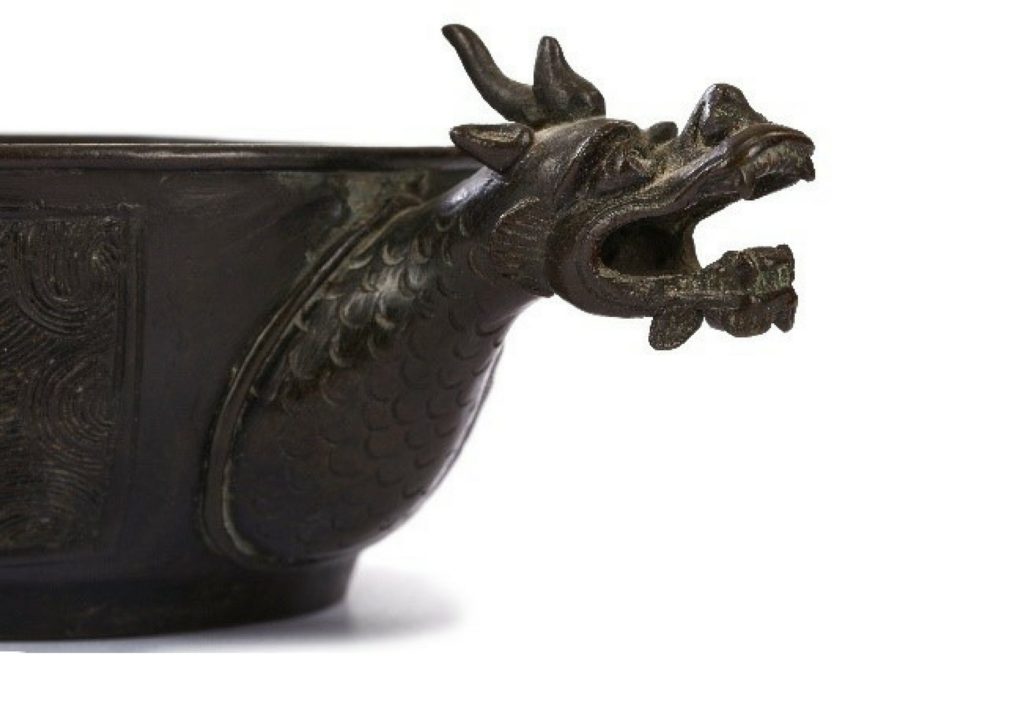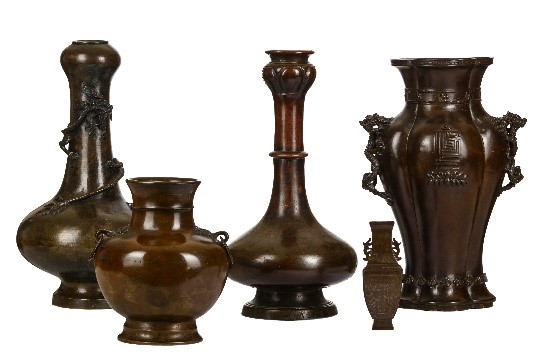The Flourishing Market for Later Chinese Bronzes
Long considered the hidden gem of Chinese art, later bronzes created from the Song through to the Qing Dynasty (10th to early 20th century) are enjoying a resurgence of global interest. Once overshadowed by ceramics, jade or calligraphy, these masterfully cast objects are now commanding greater attention from collectors and scholars alike.
A wave of exhibitions and major private collection sales in Asia has sparked renewed enthusiasm for the category. In recent years, prices have risen steadily, yet this remains an area where collectors can still find exceptional quality and value.

A Dragon Headed Ewer. 16th-18th Century.
What Are Later Chinese Bronzes?
The term 'later bronzes' refers to pieces produced after the classical Shang and Zhou Dynasties, during which China’s first golden age of bronze casting took place. From the Song period onwards, artists reinterpreted these ancient forms with new techniques, often adding fresh decorative styles, inscriptions and refined patination.
These works span many formats, from religious sculptures and ritual vessels to scholar's objects and incense burners. Below are some of the key categories shaping this dynamic collecting field.
A selection of bronze censers. 17th – 19th Century.
Censers: Where Form Meets Function
One of the most iconic formats in later bronze is the censer. These were used for burning incense, a daily ritual in homes, temples and scholarly settings. Some are restrained in design, with smooth bulbous bodies or tripod feet, while others are richly adorned with gilding, handles or stylised motifs.
Unusual examples include censers shaped as mythical creatures or legendary figures such as Lao Zi or Du Fu. In some instances, the smoke would rise through the mouth of a dragon or poet, creating a dramatic, sculptural effect.
A pair of incense burners formed as Zhang Guo and Li Tieguai. 17th Century.
Scholar’s Objects: Refinement in the Details
Bronze weights, brush rests and water droppers formed an integral part of the Chinese scholar’s table. These items often featured animals, poetic inscriptions or references to earlier dynastic styles. Many bear the six-character Xuande mark, referencing the Ming emperor whose name became synonymous with bronze of the highest quality.
Collectors are drawn to these compact yet intricate forms, which represent a perfect balance of aesthetic appeal and quiet symbolism.

Figurative censers depicting Du Fu and Lao Zi. 17th Century.
Vases: Timeless Elegance
Later bronzes also include a wide variety of vases, from miniature examples made for incense utensils to large altar vessels used in temples. They often follow ancient shapes such as the hu or gu, and feature surface treatments like silver inlay or patterned panels. Whether minimal or richly decorated, they speak to a continuity of design across centuries.
Flower vases. 17th – 19th Century.
Archaistic Works: Echoes of China’s Bronze Age
A notable trend in later bronze production is the deliberate revival of archaic forms. Inspired by Shang and Zhou ritual vessels, these reinterpretations feature mythical creatures, wave patterns or stylised spouts and handles.
Collectors value the way these pieces blend past and present. While inspired by antiquity, they were often created with new materials, proportions or artistic sensibilities. This interplay is part of what makes the category so intellectually rewarding.
Bronze paper weights. Each with Xuande mark and possibly of the period.
Figurative Sculpture: Sacred and Secular Icons
Bronze sculpture of the later periods includes religious figures such as Buddha, Guanyin and bodhisattvas, as well as secular figures like poets, scholars or historical legends. These sculptures range from the serene and contemplative to the quirky and animated.
The best examples show not only technical mastery but also character and presence, qualities that have long appealed to Western collectors.

A Dragon Headed Ewer. 16th-18th Century.
Why Collect Later Chinese Bronzes?
For many, the appeal lies in the craftsmanship and historical depth. These are objects designed for daily use, spiritual practice or quiet contemplation. Each piece tells a story, often layered with symbolism, ritual meaning or artistic reference.
At a time when the market for Chinese ceramics and jade can feel crowded, later bronzes offer a fresh and relatively accessible area of collecting. Whether you are drawn to minimalist scholar’s weights or ornate incense burners, there is much to discover.
Thinking of Selling?
Chiswick Auctions welcomes consignments of later Chinese bronzes, as well as ceramics, jades and scholar’s objects from across East and South Asia. Whether you own a single piece or a larger collection, our team is available to provide a complimentary valuation and specialist advice.
Please contact our Asian Art Department at asian@chiswickauctions.co.uk
or submit an Online Valuation via our website.
Let us help your works of art reach an international audience.